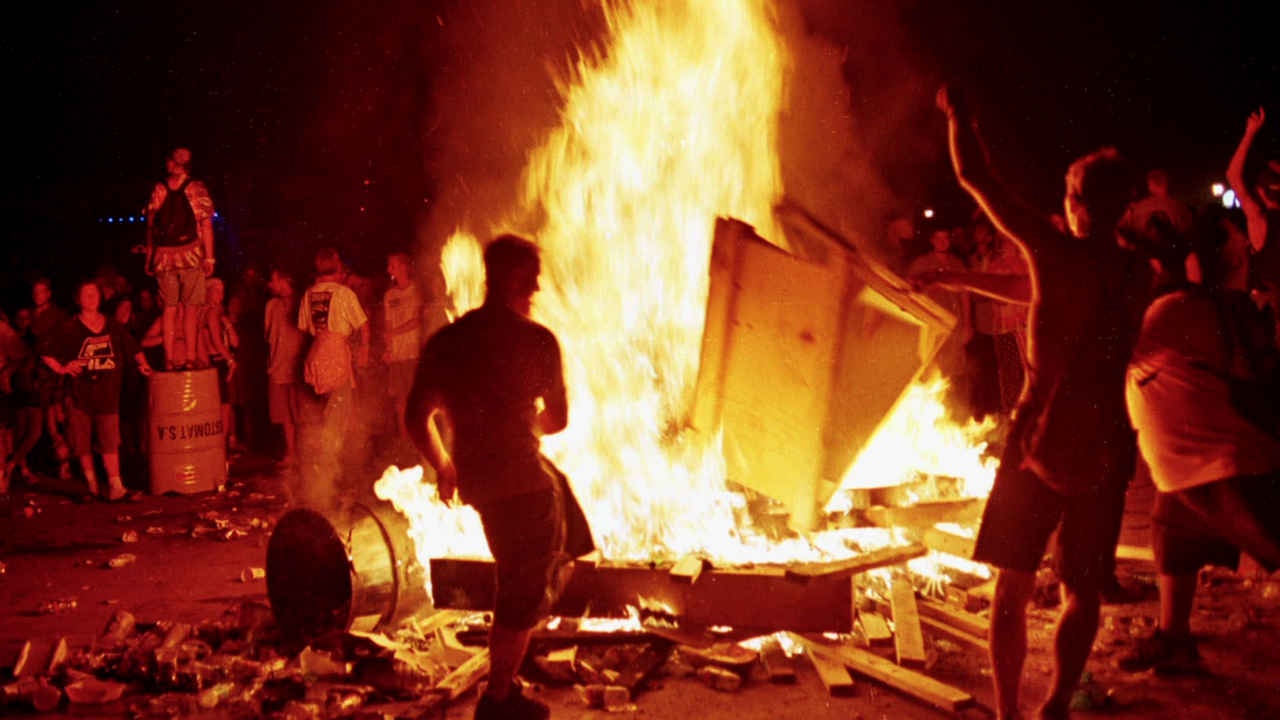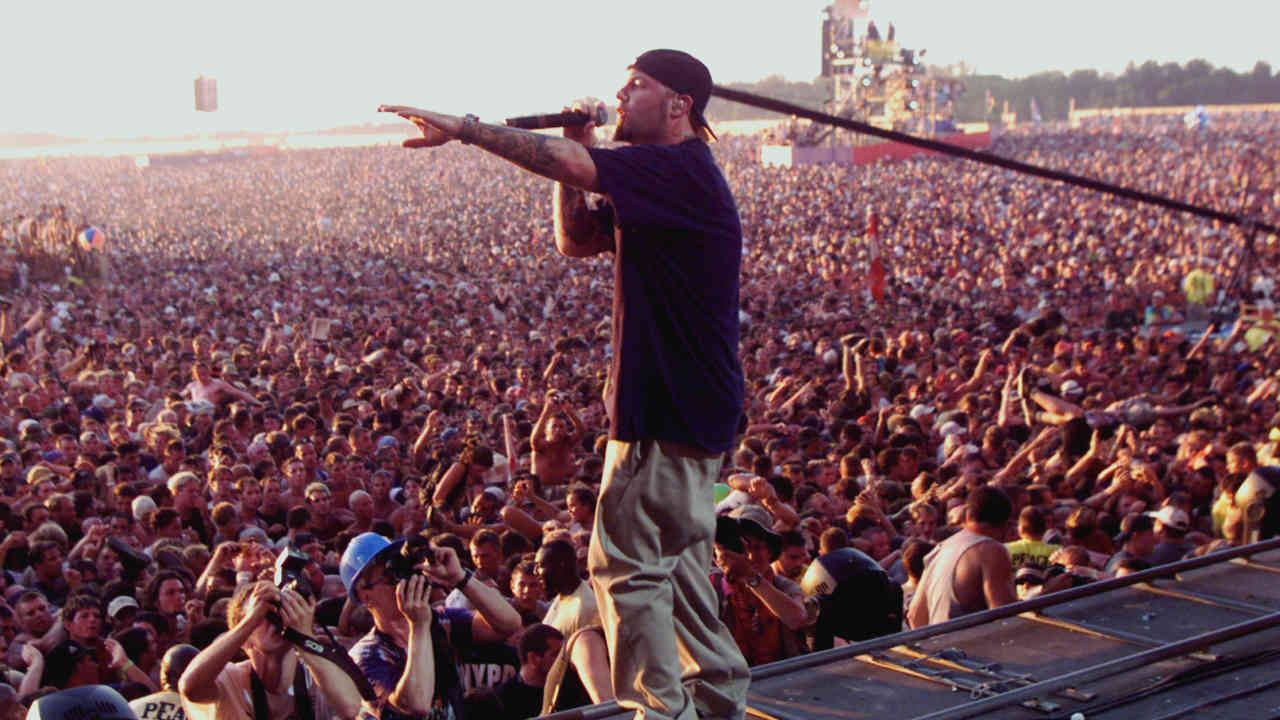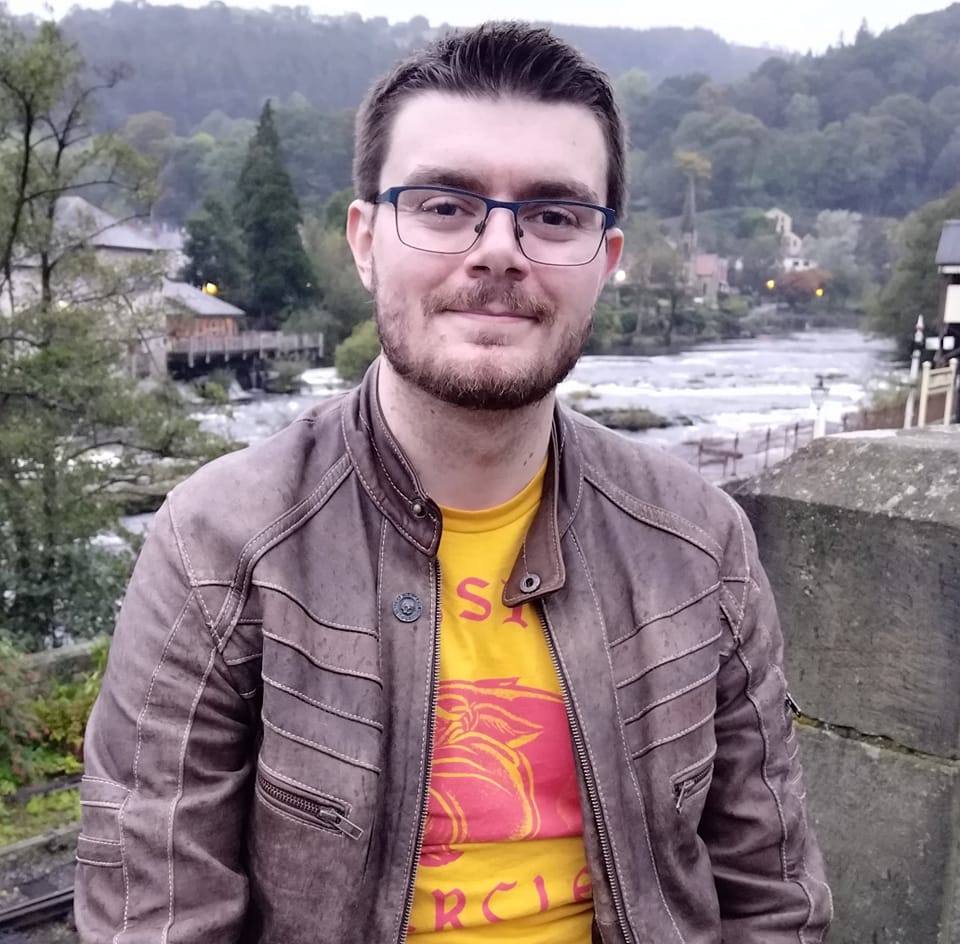Woodstock ’99 was meant to be the greatest festival of its generation. A quarter of a million people gathering in a disused air base in Rome, New York, for three days to watch the era’s biggest bands and artists. The idea was to celebrate the 30th anniversary of the original Woodstock, arguably the most famous music festival ever. But today, this car-crash of an event is remembered as one of the most disastrous festivals ever.
“I don’t think anybody going into Woodstock ’99 wanted it to be a disaster,” says Jamie Crawford, director of Trainwreck: Woodstock ’99, a new three-part Netflix documentary on the festival. “They all aspired to recreate the utopian magic of the original Woodstock, but in many ways that lightning in a bottle didn’t really exist. The image that many of us have of Woodstock, we take from the movie [Michael Wadleigh’s 1970 documentary]. 400,000 people were there and four million people will tell you they were there.”
On paper, Woodstock ’99 looked epic. The line-up was stacked with some of music’s biggest names, with the likes of Metallica, Rage Against The Machine, Megadeth and the Red Hot Chilli Peppers repping rock and metal on a bill that also featured James Brown, Willie Nelson, Sheryl Crow and Alanis Morissette. But a lot of eyes were on Korn and Limp Bizkit, two bands whose respective career trajectories were on a serious upswing at that point. This was as much a coronation for nu metal as it was a celebration of Woodstock‘s original spirit.
The peace-and-love vibes of the original event were in short supply in 1999. Food and drink were overpriced and understocked, and the festival infrastructure – including toilets and showers – were poorly planned, a situation that agitated the crowd. But that wasn’t the worst of it.
The four-day festival descended into chaos and violence, blighted by riots, arson, sexual assaults and rapes. By the end of the weekend, three people had died. What went wrong? It’s a question that Trainwreck seeks to answer.
From its opening scenes, the documentary paints the picture of a weekend that was always doomed to fail. Despite the mythology that surrounds it today, the original Woodstock was a shambles. It was meant to be a ticketed event, yet they forgot to put fences up. A mud-splattered 25th anniversary event in 1994 – featuring Green Day and Nine Inch Nails, among others – similarly haemorrhaged cash when more than half of the audience snuck in for free. The third iteration of it needed to make a profit, and that desperation was at the core of many of its countless problems. As Metallica guitarist Kirk Hammett neatly summarises it in a 1999 archive interview included in Trainwreck: “Peace plus love equals capitalism.”

When telling the story of Woodstock ’99, director Crawford had only one rule: he wouldn’t interview anybody who didn’t attend.
“We wanted people who had been on the ground and seen it for themselves,” he says. “It lets the miniseries offer up that broad palette of experiences so that, as a viewer, you can make your own judgement calls.”
Contributors include Woodstock founder Michael Lang, whom Jamie spoke with just three months before his death in January 2022, as well as a plethora of fans and journalists who witnessed the chaos unfold over the entire weekend. Among the musicians interviewed are Bush frontman Gavin Rossdale and Korn’s Jonathan Davis, both of whom played. There is one notable omission.
“The only person that we didn’t get that we really, really wanted to get was Fred Durst,” says Crawford. “I think that one of the reasons he didn’t do the interview is because Limp Bizkit have been tarnished by that weekend.”
Limp Bizkit’s Saturday night set marked the point when Woodstock ’99’s problems erupted. By the time the band took to the stage, the crowd had been baking in the sun without shade for two days and forced to pay ridiculously inflated prices for basic food and drink. Bizkit shows usually acted as a cathartic release for their audiences. Here, their hour-long set became the spark that set off the powderkeg. By the time they unleashed Break Stuff, the crowd was in the mood to go crazy. Obeying that song‘s instruction, audience members began tearing down the stage and the sound tower. More disturbingly, women were sexually assaulted in the mosh pit by male fans (reports of gang rapes also emerged afterwards).
Fred Durst tried to calm things down during Limp Bizkit’s set. “Don’t let anybody get hurt, but I don’t think you should mellow out,” he said. “That’s what Alanis Morissette had you motherfuckers do. If someone falls, pick ’em up.”
Different people in the documentary express conflicting views of what happened. “[Limp Bizkit] don’t give a fuck,” says Korn’s Jonathan Davis. “[Durst] was just the ring leader. He’d get people to do the craziest shit.”
Another talking head says the singer was stoking the crowd: “Fred Durst wasn’t trying to get them to stop – he was joining in! He got up on a [wooden] board trying to crowdsurf… and I’m like, ‘What is he doing?!’”
Durst himself subsequently shifted the blame for the violence to Lang and festival promoter John Scher. “It’s easy to point the finger and blame [us], but they hired us for what we do – and all we did is what we do,” he said to Variety in 2019. Jamie Crawford agrees. “They had this back-to-back run of Limp Bizkit, Rage Against The Machine and Metallica,” he says. I think that one [metal band] piled on top of another does aggregate to create an atmosphere which is pretty hard to wind in.”
Limp Bizkit’s set was just the start of Woodstock’s problems. On the Sunday, an anti-gun group handed out candles with the intention of holding a vigil during that night’s headline set by the Red Hot Chili Peppers. In the end, the crowd used them to start bonfires during the show: behaviour that was only aggravated when the Chilis opened their encore with a cover of Jimi Hendrix’s Fire.
Over the course of the festival, everyone had been told to expect a massive surprise to end the Sunday with a bang. According to Trainwreck, people were expecting stars as enormous as Michael Jackson, or even an Appetite For Destruction-era Guns N’ Roses reunion. What they got was video footage of Jimi Hendrix playing in 1969. What followed was a night-long riot, closing Woodstock ’99 on an appropriately bleak note.
Despite the enormous array of mistakes over the course of the weekend, Crawford doesn’t lay the blame for Woodstock ’99 at any one person’s feet. Still, Scher is the closest thing to Trainwreck’s villain. By his own admission, the festival boss knew almost nothing about the bands he was booking. He also overruled everyone else on his team to make Griffiss Air Force Base – an airfield with no shade whatsoever – the venue for a summertime festival, later downplaying Woodstock ’99’s issues as “isolated”.
“It was a huge venue and the most senior staff weren’t out in the trenches,” explains Crawford. “Some of the more junior staff who worked the festival gave a very different assessment of what happened.”
To the filmmaker, it was a perfect storm of bad decisions and bad luck at every level that made Woodstock ’99 the mess it was.
“We’re not necessarily hammering home a message that we should take for today,” he says, before summarising: “Blaming metal for Woodstock ’99 would be like when people blame certain disasters on video games.”
Trainwreck: Woodstock ’99 is streaming on Netflix from August 3.

